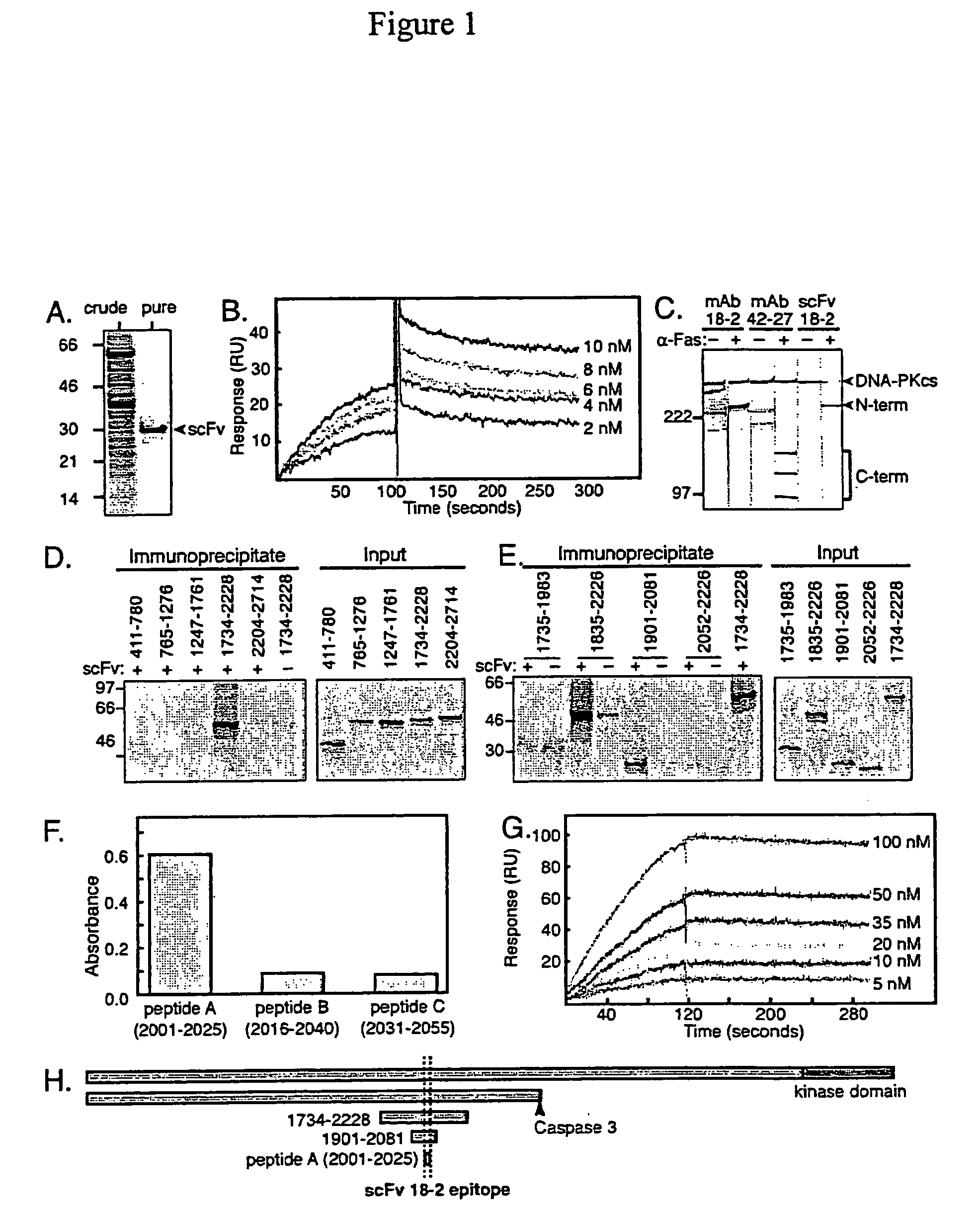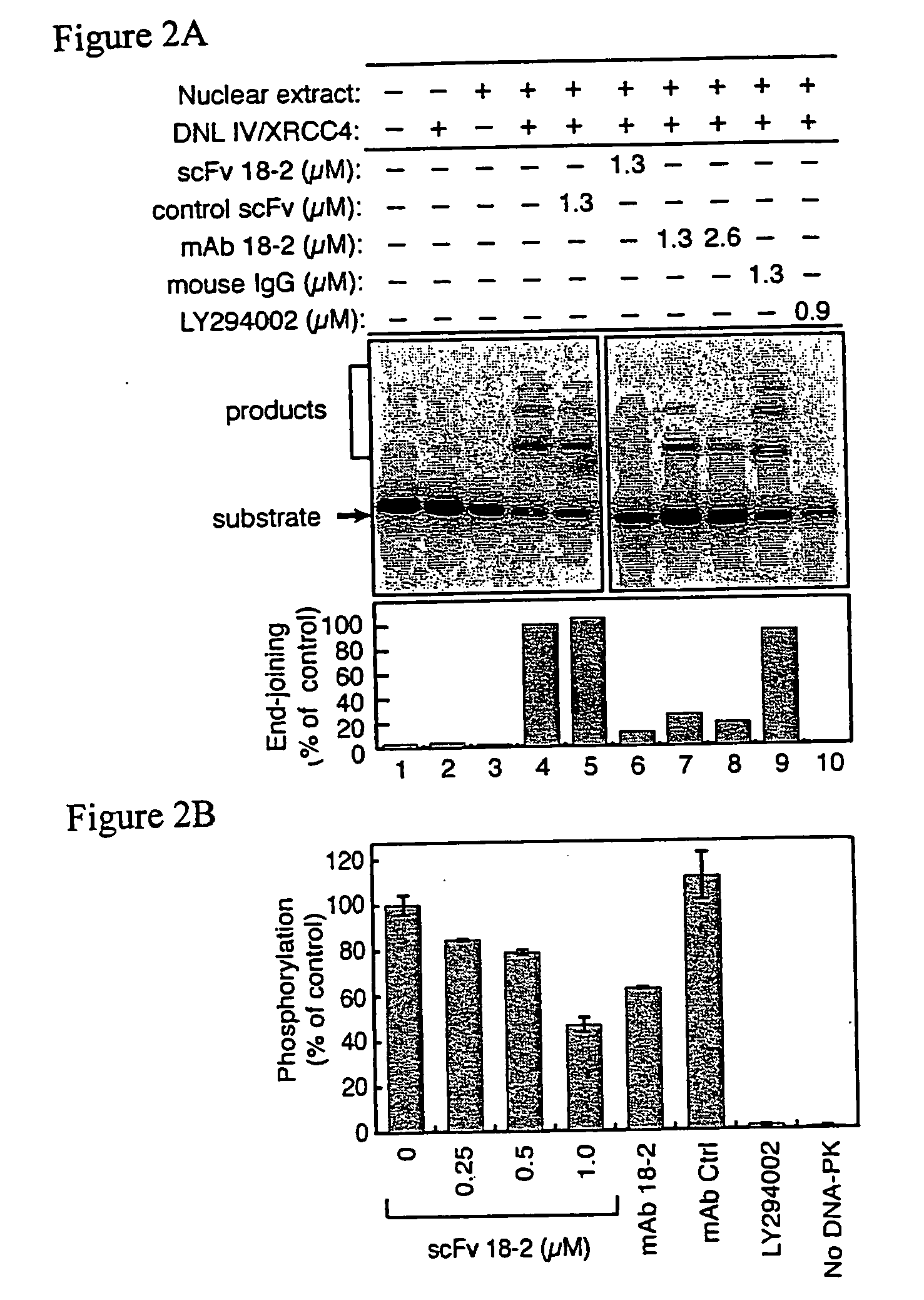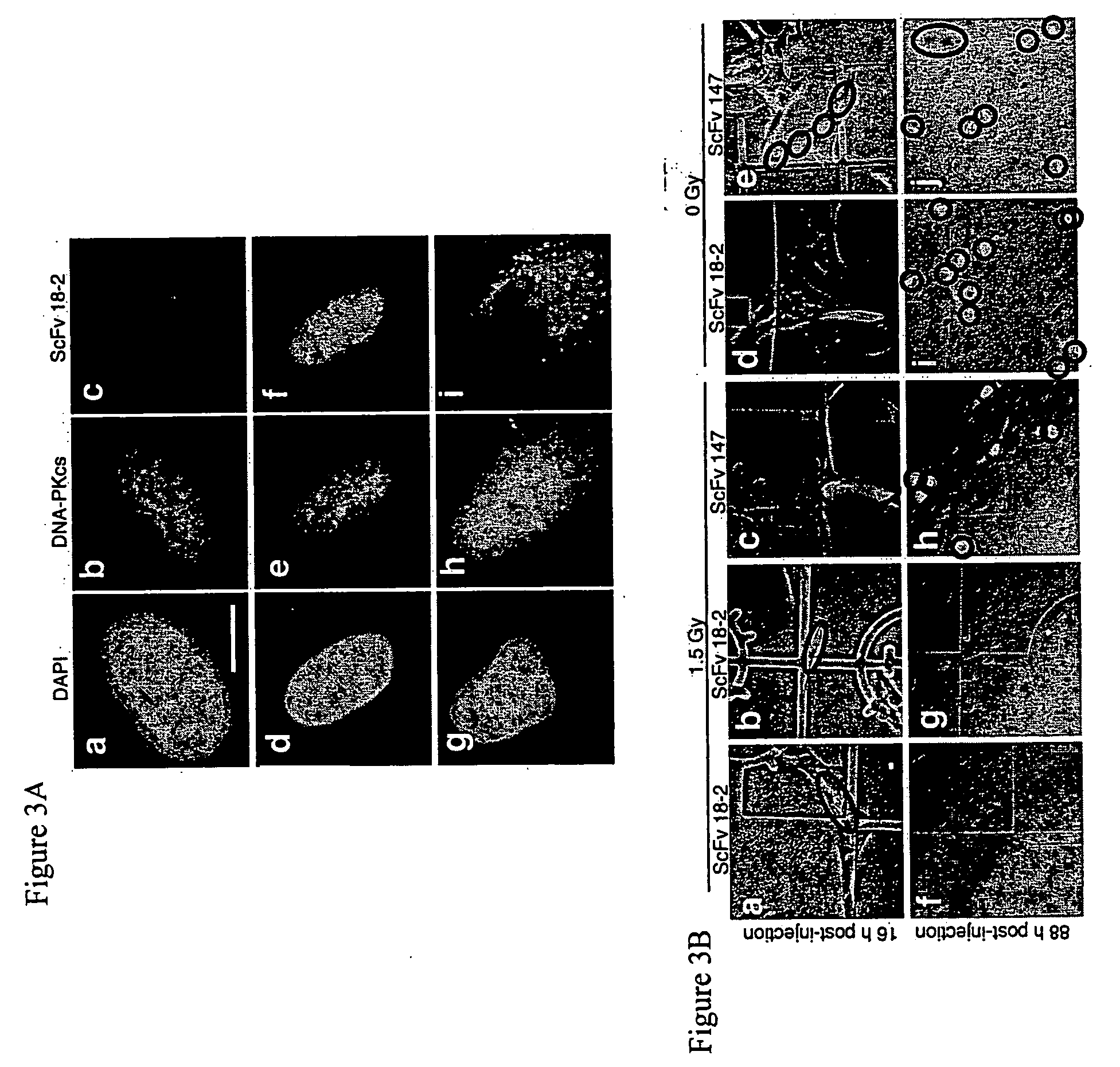Compositions and methods for modulating DNA repair
a technology of dna repair and composition, applied in the direction of antibody medical ingredients, instruments, peptide/protein ingredients, etc., can solve the problems of limited radiation therapy efficacy, radiation damage to cancer cells and normal cells, and inability to continue cell growth and multiplying, so as to prevent or reduce the formation of dna repair complexes
- Summary
- Abstract
- Description
- Claims
- Application Information
AI Technical Summary
Benefits of technology
Problems solved by technology
Method used
Image
Examples
example 1
scFv 18-2 Recognizes a Site in DNA-PKcs Outside of the Catalytic Domain
[0151] A reverse transcription-PCR strategy was used to amplify the rearranged heavy and light chain variable region genes from mAb 18-2-expressing cells. Amplified genes were assembled into a scFv-encoding cDNA, which was subcloned for overexpression in the E. coli periplasm. Purified scFv preparations, obtained by affinity chromatography as described in Material and Methods, contained a prominent 30 kDa band (FIG. 1A). This was identified as the scFv based on its size and anti-epitope tag immunoblotting. The presence of authentic heavy and light chain variable fragment sequences was verified by comparison with Kabat immunoglobulin sequence database using the AbCheck tool (Martin, A. C. (1996) Accessing the Kabat antibody sequence database by computer. Proteins, 25, 130-133) and by molecular modeling using the WAM tool (Whitelegg, N. R. and Rees, A. R. (2000) WAM: an improved algorithm for modelling antibodies ...
example 2
Inhibition of DNA-PK Activity in Cell-Free Assays
[0154] To test the effect of scFv 18-2 on DNA end joining, reactions were performed in a cell-free system containing linerarized plasmid substrate, HeLa cell nuclear extract and recombinant DNA ligase IV (DNA IV) / XRCC4 complex (Huang, J. and Dynan, W. S. (2002) Reconstitution of the mammalian DNA double-strand break end-joining reaction reveals a requirement for an Mre11 / Rad50 / NBS1-containing fraction. Nucleic Acids Res., 30, 667-674.). Consistent with previous results, nuclear extract and purified DNA IV / XRCC4 each had little activity when tested alone, but catalyzed efficient conversion of linear substrate to dimers and higher oligomeric products when tested as a mixture (FIG. 2A, lanes 1-4). scFv 18-2 strongly inhibited end joining, whereas an unrelated control scFv had little effect at an equal concentration (lanes 5 and 6). The parental mAb 18-2 inhibited end joining, although the inhibition was incomplete, even at the highest c...
example 3
Intracellular Binding of scfv 18-2 to DNA-PKcs
[0156] Microinjection of antibodies is a well-established method to study intracellular protein function (Morgan, D. O. and Roth, R. A. (1998) Analysis of intracellular protein function by antibody injection. Immunol. Today, 9, 84-88; McNeil, P. L. (1989) Incorporation of macromolecules into living cells. Methods Cell Biol., 29, 153-173). Although scFv can, in principle, be expressed intracellularly by gene transfer, microjection was chosen for the present study because it allows introduction of native, folded antibody directly into the nucleus. This eliminates concerns over disulfide bond formation and folding in the intracellular environment, which are common obstacles to use of scFv for intracellular applications (Cattaneo, A. and Biocca, S. (1999) The selection of intracellular antibodies. Trends Biotechnol., 17, 115-121). Initial experiments were performed using telomerase-immortalized human retinal pigment epithelial (RPE) cells e...
PUM
| Property | Measurement | Unit |
|---|---|---|
| droplet size | aaaaa | aaaaa |
| pH | aaaaa | aaaaa |
| pH | aaaaa | aaaaa |
Abstract
Description
Claims
Application Information
 Login to View More
Login to View More - R&D
- Intellectual Property
- Life Sciences
- Materials
- Tech Scout
- Unparalleled Data Quality
- Higher Quality Content
- 60% Fewer Hallucinations
Browse by: Latest US Patents, China's latest patents, Technical Efficacy Thesaurus, Application Domain, Technology Topic, Popular Technical Reports.
© 2025 PatSnap. All rights reserved.Legal|Privacy policy|Modern Slavery Act Transparency Statement|Sitemap|About US| Contact US: help@patsnap.com



